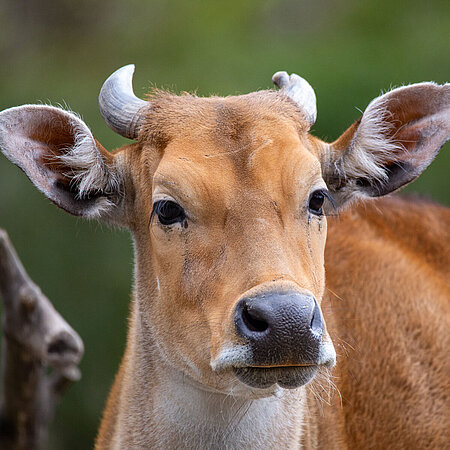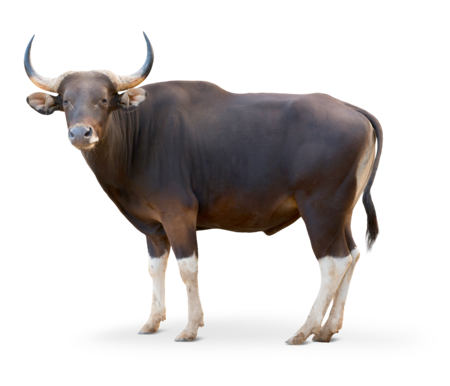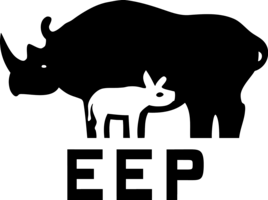Javan Banteng
Bos javanicus javanicus

- FamilyBovids (Bovidae)
- Weight600 – 900 kg
- HabitatTropical rainforests
Peaceful livestock
Also known as Bali cattle, the domestic Javan banteng is an important livestock for the people of the island of Java (Indonesia). It supplies the region with milk and meat, while the leather and horns generate an additional source of income. Both the male and female have horns, but can be clearly distinguished by their coat colour. Typically peaceful, Javan bantengs may react aggressively if harassed or alarmed.

Home is where the rainforest is
The Javan Banteng is native to the Javanese rainforest. It is most active at night and during twilight. Bantengs thrive in the wet and humid habitat, particularly as they are good swimmers. The herds roam the forests where they feed on fresh grasses and leaves. Like many herbivores, bantengs need to visit a salt lick to get essential mineral nutrients, but in coastal areas they will occasionally drink seawater.
Bantengs are classifi ed as endangered due to rainforest deforestation, interbreeding with domestic cattle and livestock diseases.
Distribution


Hellabrunn Zoo participates in the European Endangered Species Programmes